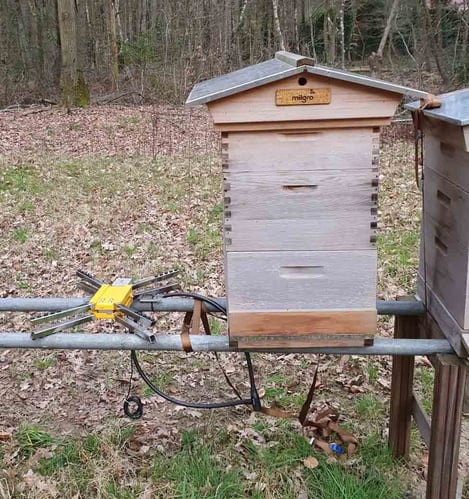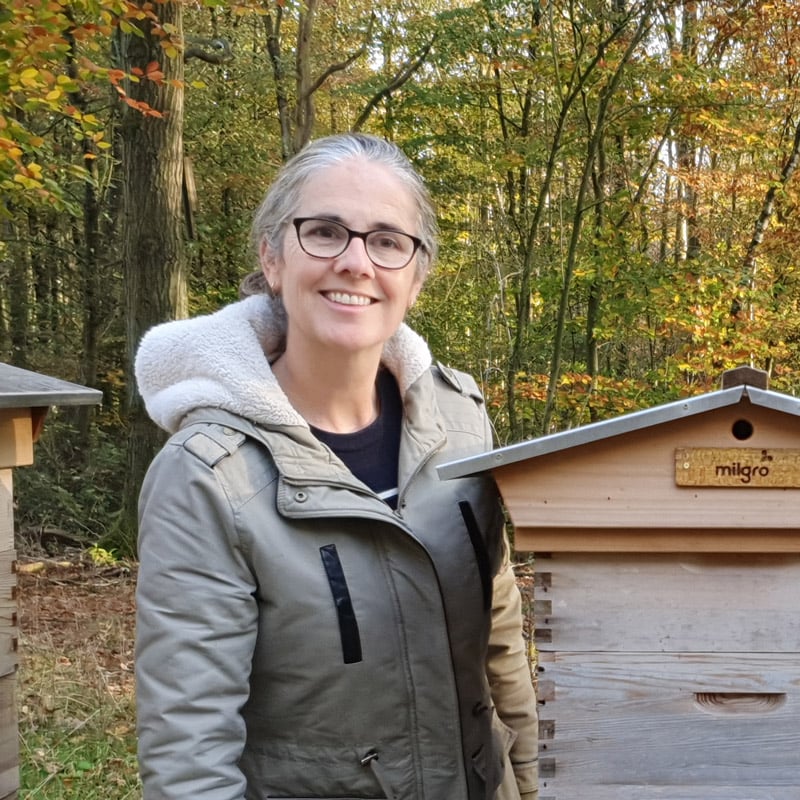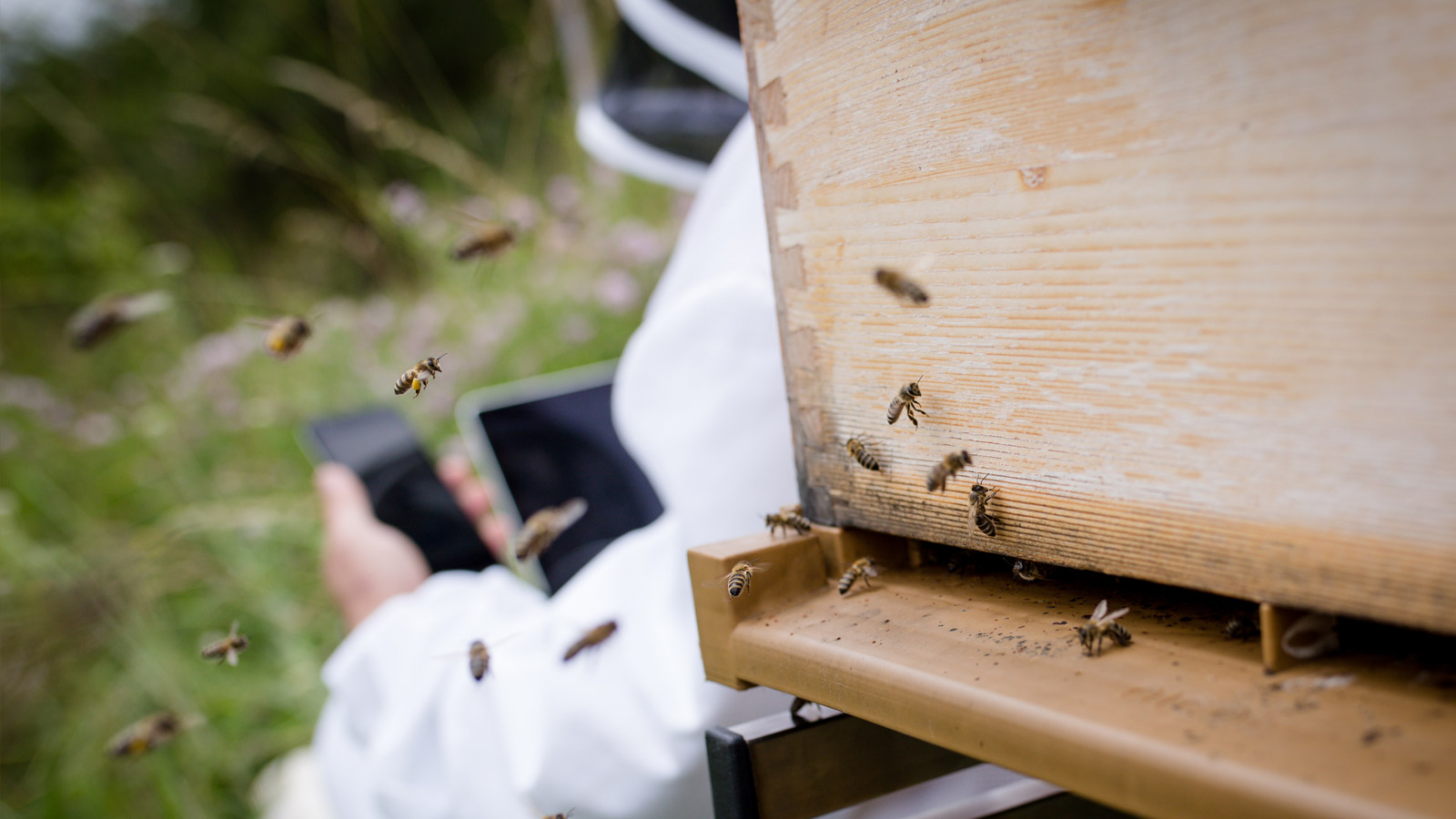In the world of bees and beekeepers, the Internet of Things (IoT) is an important development for more insight into bee behavior. The collected data will lead to more vital bee colonies through knowledge sharing and enrichment in the beekeeper community and science. The bees experience more peace of mind, because action is only taken when it is really necessary.
Optimize based on data insights
The Internet of Things is a network of connected devices. The devices are connected to the internet and collect data. The collected data is sent to a central database and made clear and accessible to the beekeeper.
The most important data for keeping bees are: weight, temperature, humidity, flight activity and the sound of the bee colony in the hive. The temperature is measured inside and outside the hive. For example, it may be that in the core of the bee brood it is 35 degrees Celsius while it is freezing outside.
The data is collected with the help of sensors. The sensors, a small microphone, a digital scale and a cord with a thermo sensor button at the end, are attached in and under the hive.

The data is retrieved several times a day and sent to a central database. This database processes the data into a clear dashboard, to which the beekeeper can also add information about the size of the hive and the type of bees, for example. The beekeeper can access these dashboards on their mobile, PC or pad and see how the temperature of a beehive develops and more.
What does the beekeeper need this data for?
- Temperature: if the temperature is high, this could mean that there is a lot of bee brood, because eggs and larvae are kept warmer than adult bees. If there is a lot of bee brood it can mean that the colony is growing and extra space is needed. It can also mean that the hive is already full, and the bee colony therefore needs more space.
- Weight: if the weight decreases, this could mean that there is not enough honey and pollen and the population is starving. The beekeeper can then feed the bee colony with extra honey or Apifunda, a special type of sugar paste. It is also good to know when plenty of nectar is being brought in. The beekeeper can then estimate whether it is already time for a honey harvest.
- Sound: The queen emits a sound at its own unique frequency, different from the rest of the bee colony. This makes it possible to measure whether the queen is still present. In practice, this element does not always work well, it is not expected to be long before it really works well. If the buzzing of the bees is at a lower frequency, it means that the bee colony is stress-free, when there are peaks in the frequency this indicates unrest. Possibly get the bee colony ready to swarm. A notification can then be sent to the beekeeper, so that timely action can be taken.
Milgro dashboard in the first week of April

Observations: it has been cold outside the hive, there was even snow and hail in the first week of April this year! It is warm in the hive, between 25 and 35 degrees. This means that there is bee brood. The temperature appears to be decreasing. The nest may shift further away from the sensor. When the weather gets warmer in the coming weeks, the weight will increase, because the bee brood needs pollen and honey. The sound frequency indicates that the bee colony is active, but not in a stress situation. It is too early to detect swarm tendency. If there is brood, then there is a queen present that lays eggs. The weight has increased by one and a half kilos in 1 day, this could be because a bird or cat sat on it, for example. Due to the cold weather, the bees seem to get about as much feed as what they process, so the weight remains the same. They save their energy for the better warm days, only to fly out and get the much-needed nectar and pollen.
Data-driven beekeeping
Best practices can be developed by collecting data from different bee colonies at different beekeepers. This enables a beekeeper to make the most effective decision in different situations. Managing a bee colony is thus less drastic for the bees, because the hive does not need to be opened as much. The beekeeper can monitor several bee colonies on the go. This also saves on transport and relieves the span of control.
Milgro hive equipped with Beep technology
The Milgro hive is equipped with the Beep monitoring tool by Liquid Nature. Beep's data is shared with Wageningen University & Research (WUR) for the 4-year bee research program B-good.
Milgro applies technology to companies on a daily basis to measure, provide insight and optimize waste and raw material flows. In other words, a first step to integrate the management of natural capital into business operations. A logical choice for the Milgro beehive to use this latest beekeeping technology.












